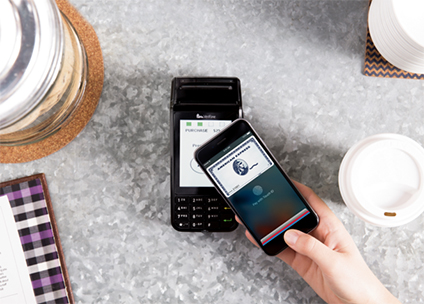The smartphone is arguably the greatest invention of the 21st century. These pocket-sized power houses have undoubtedly changed the way we live. We have become increasingly reliant on these devices – more than 90 per cent of us use them while in bed, and nearly half of us admit to using them while on the toilet! Despite their power and pervasiveness, however, there is one cumbersome task that smartphones have not yet been able to simplify – mobile payments. When it comes to paying for th
ings we buy on our smartphones we are still fumbling around with our credit cards trying to key in digits on an undersized keyboard and going through numerous security checks. Every app or website you use makes you pay in different ways and most don’t allow you to store your payment details with ease.
While there are platforms such as PayPal, which are used by many merchants to speed up the checkout process, tech blog Wired has pointed out that there is currently no universal standard by which e-tailers can build payment infrastructure into their online shopping experiences. This creates friction, slowing down the consumers’ path to purchase and often resulting in lost sales. We want convenience; we want simplicity and we want these tedious tasks eliminated from our daily lives.
A company called Stripe, based in San Francisco, is attempting to do just that. Backed by an impressive list of investors including Visa, American Express and Elon Musk, Stripe has developed a piece of computer code dubbed ‘Relay’ which could simplify or possibly eliminate the purchase process on mobile devices.
The code essentially allows users to place a ‘Buy’ button anywhere. It sounds simple but the result is customers can make purchases across almost any platform (think social media sites, shopping apps, etc.) with the press of a button. At the back end, Relay handles the entire order process, accepts payment securely and provides merchants with the details they need to fulfil the order.
If Relay catches on it has huge potential to monopolise the mobile payments market much like Alipay (an online payment platform) has in China, controlling just under half of China’s online payment market in 2014. However, there are worthy competitors in the mobile wallet space including Android Pay, PayPal and the sleeping giant that is Apple Pay.
Currently, Apple Pay processes just one per cent of all transactions in the US and has just touched down in Australia. The technology is facing major hurdles in the form of negotiations with our banks around payment fees. Indeed, some of the banks have introduced their own mobile payment infrastructure solutions for retailers. For example, CBA’s Albert EFTPOS tablet offers a suite of apps alongside regular EFTPOS and mobile payment functionalities to assist retailers in running their business. Also, Apple Pay doesn’t offer much more convenience than our current tap-and-go system in terms of physical payments.
However, Apple has the upper hand when it comes to infrastructure. E-commerce (iTunes, iBooks and the App Store) is currently Apple’s second-most profitable business segment, growing at a double-digit rate. This enormous ecosystem means Apple has payment details for most of its 800 million users already on file. Experts predict this figure to reach one billion sooner rather than later.
If Apple can expand its iTunes business into a mobile payment business, we will soon be using our thumbprints to make online purchases and our phones to pay in-store.
In whatever form it takes, consumers are eagerly awaiting a simple solution that provides security of payment and protects personal privacy.
James Stewart is partner at Ferrier Hodgson.
Want more Inside Retail? Subscribe to Inside Retail Weekly now and get our premium print publication delivered to your door every week.

